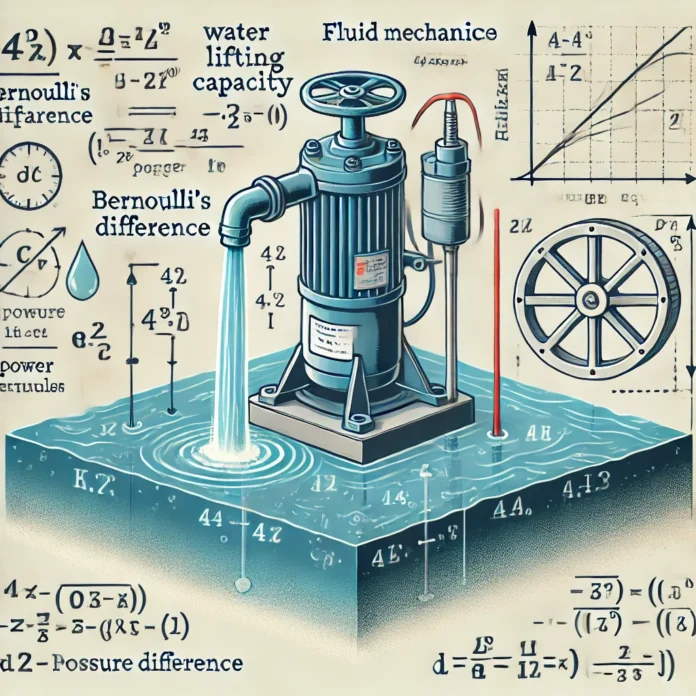Are you wondering how to calculate how much water a pump can lift at different heights? Let’s break it down step by step with a real-world example!
Problem Statement:
A 3 horsepower submersible pump can lift 140 liters of water per minute at a head of 39 meters. If the water lifting capacity of this pump is 138 meters, how many liters of water can this pump lift at a head of 100 meters?
Solution:
The key idea here is that the pump’s power remains constant. This means the product of flow rate (Q) and head (H) will also remain constant. Mathematically, this is expressed as:
Q1×H1=Q2×H2Where:
- Q1=140 liters per minute (flow rate at 39 meters head),
- H1=39 meters,
- H2=100 meters (new head),
- Q2= ? (flow rate at 100 meters head).
Step 1: Write the Equation
Using the relationship above:
140×39=Q2×100
Step 2: Solve for Q2
Q2=140×39100Q2=5460100Q2=54.6 liters per minute
Final Answer:
At a head of 100 meters, the pump can lift approximately:
54.6 liters per minute
Conclusion:
By understanding the relationship between flow rate and head, you can easily calculate a pump’s capacity at different heights. This is especially useful for designing irrigation systems, water supply systems, or any application involving pumps!

